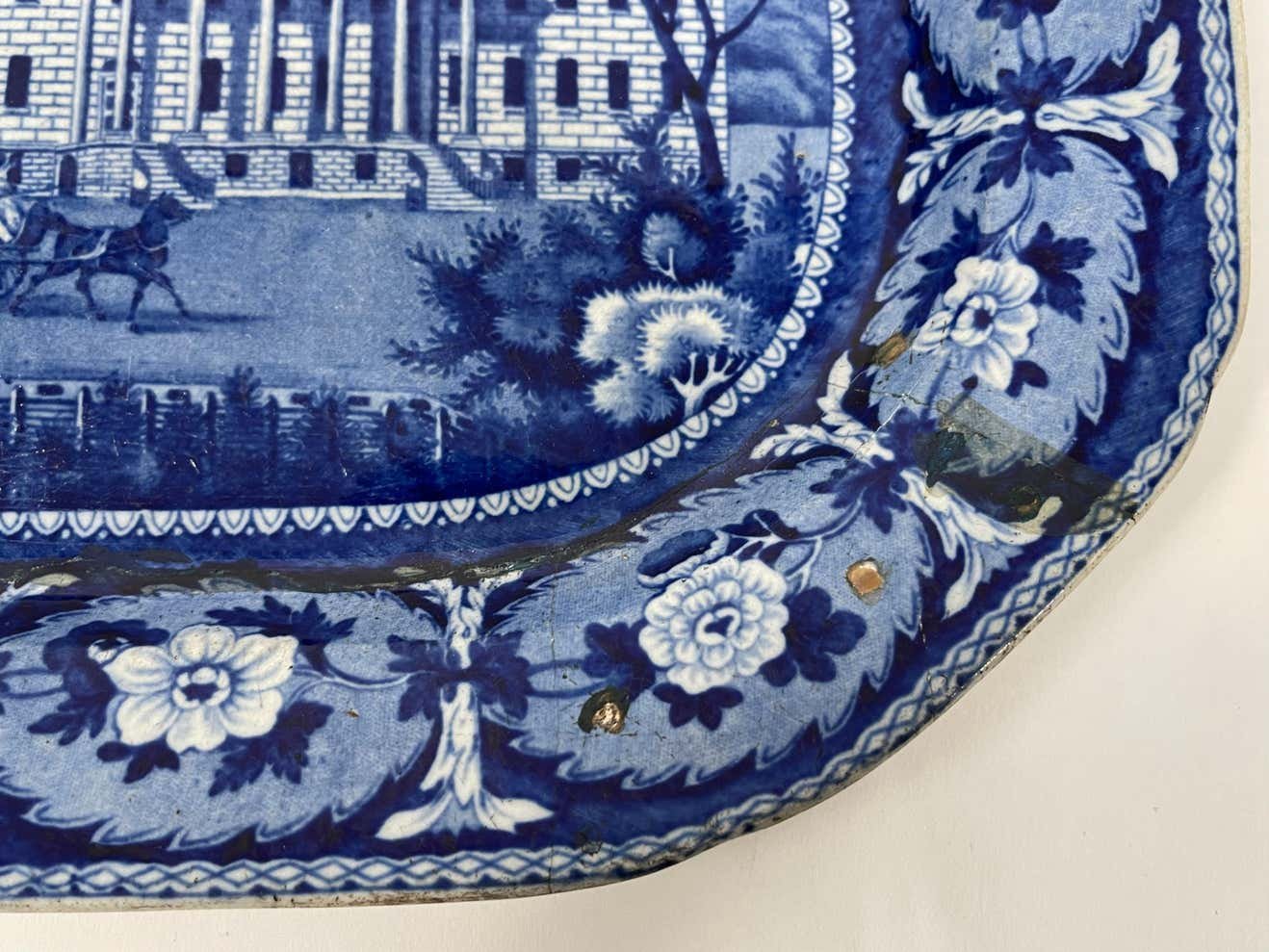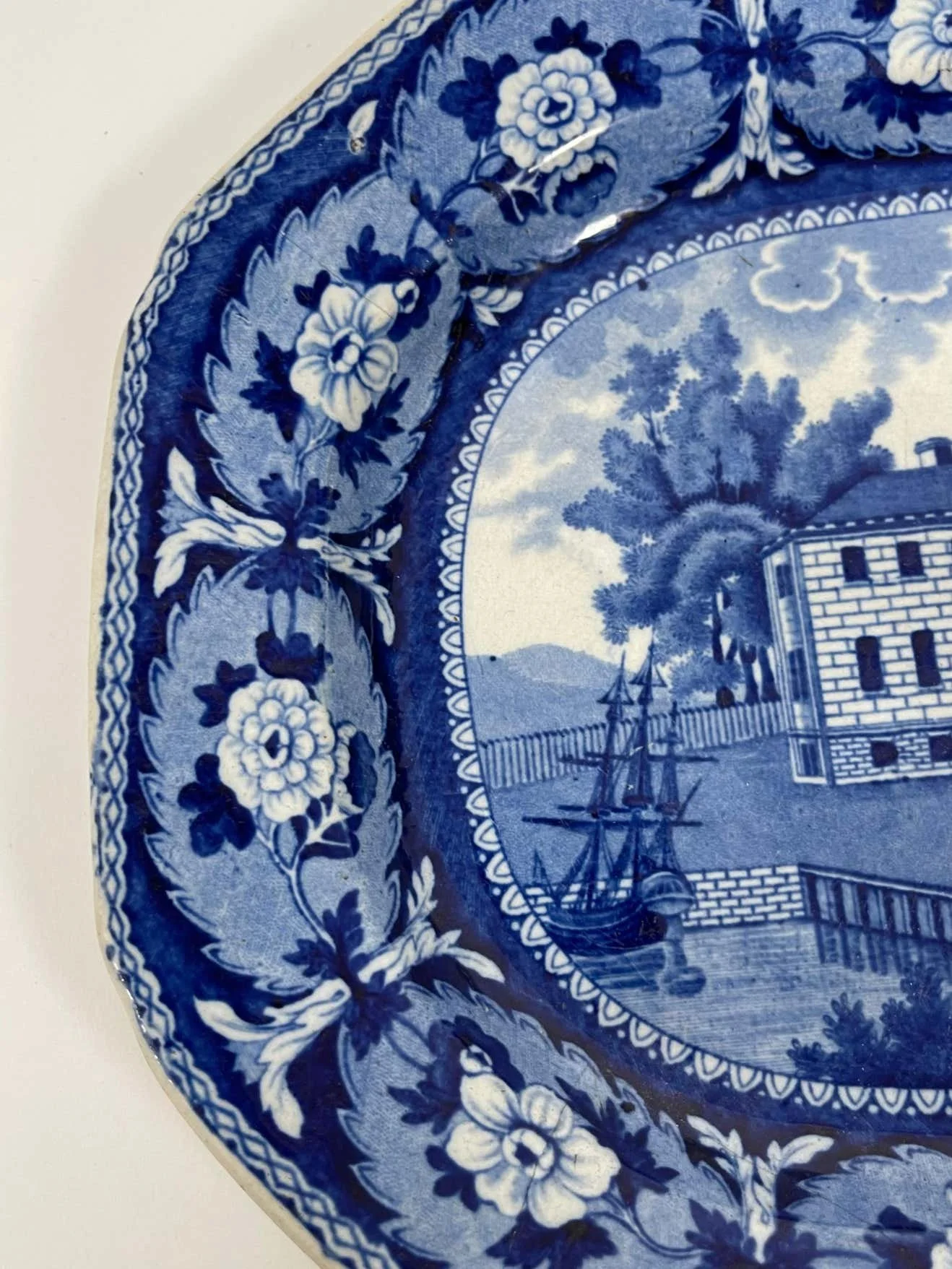19th Century Blue and White Staffordshire Mass General Hospital Platter
19th Century Blue and White Staffordshire Mass General Hospital Platter
A 19th century blue and white Staffordshire pottery platter depicting the original Massachusetts General Hospital building in Boston designed in 1818 by Charles Bulfinch (1763-1844) and home of the world's first Ether Dome. The platter is entitled "Hospital Boston" part of the Beauties of America series produced by John and William Ridgway. The neoclassical Federal period building is shown with a horse drawn carriage striding by and a ship anchored nearby, within a border of flowers within reserves.
Height: 9 1/2” Width: 12 1/2” Depth: 1 1/2”
History of MGH (Source: The Russell Museum at MGH website): In 1810, the United States could boast of only two general hospitals, the Pennsylvania Hospital (founded in 1756) and the New York Hospital (founded in 1791). Locally, the marine hospital in Charlestown tended to the needs of sailors and the Boston Dispensary addressed the ambulatory care of paupers, but no New England facility in the early nineteenth century provided round the clock medical care to members of the general public. Rev. John Bartlett, Chaplain of the Almshouse in Boston, dreamed of establishing such a hospital, which would make state-of-the-art medical care available to the physically or mentally ill while affording improved opportunities for practical medical education. He joined with like-minded doctors and leading citizens to organize a fundraising campaign. Dr. James Jackson and Dr. John Collins Warren were among the foremost proponents of this plan. In 1811 the Massachusetts legislature granted a charter for the incorporation of Massachusetts General Hospital and fundraising proceeded, donations ranging from $.25 to $20,000, and including such unusual gifts as a 273-pound sow. Soon after a four-acre field in Boston's West End known as Prince's Pasture was acquired for construction of the General Hospital. The original building, The Bulfinch, opened its doors on September 3, 1821, for admission of the first Mass General patient, a saddler with syphilis, which, the records carefully note, he had contracted in New York. Mass General in its first year of operation became the first teaching hospital of Harvard Medical School. It has since been the scene of many changes, expansion and more advances in medicine than can easily be enumerated. Among the highlights have been: the first public demonstration of surgical anesthesia by William T.G. Morton and John Collins Warren (1846), the identification of appendicitis by Reginald Fitz (1886), the establishment of the first medical social service by Richard Cabot and Ida Cannon (1905), and the first replantation of a severed arm by a surgical team led by Ronald Malt (1962).










